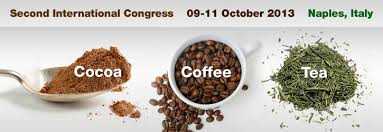Steinhaus M.1, Humin J.1 , Schieberle P.1 1 Deutsche Forschungsanstalt für Lebensmittelchemie (German Research Center for Food Chemistry), Freising, Germany. E-mail: martin.steinhaus@lrz.tum.de Ecuador is the world’s largest producer of fine flavor cocoa. This cocoa, marketed as “Nacional”, is used worldwide to manufacture high quality chocolate products. Nonetheless, more and more farmers in Ecuador replace their traditional Nacional cocoa trees by a hybrid clone named CCN-51 that exhibits superior yields and better resistance to plant diseases. However, CCN-51 is lower in aroma than Nacional and therefore is not classified as a fine flavor cocoa. CCN-51 particularly lacks the strong flowery aroma note typically associated with the noble flavor of Nacional cocoa.
To obtain an insight into the compounds responsible for the fine flavor of Nacional cocoa and the aroma difference to CCN-51, as a first step, we applied a comparative aroma extract dilution analysis [1] to solvent extracts prepared from roasted samples of both types of cocoa.
Results showed the same set of aroma-active compounds in both samples. However, the FD factors of a number of important cocoa key aroma compounds were higher in the Nacional sample, including the flowery, honey-like smelling compounds phenylacetaldehyde, 2-phenylethanol, ethyl phenylacetate, and 2- phenylethyl acetate.
Using stable isotope dilution assays, the most sophisticated tool available for compound quantitation in aroma chemistry, crucial aroma-active compounds were then quantified in a total number of 32 Nacional and 10 CCN-51 samples. The data obtained showed clearly higher mean values for the concentrations of flowery smelling compounds phenylacetaldehyde, 2-phenylethanol, and 2-phenylethyl acetate in Nacional compared to CCN-51.
The same was found for citrussy smelling linalool, an already known indicator compound in Nacional.
Recent research [2, 3] has shown that during chocolate consumption Strecker aldehydes are liberated from water-labile precursors in amounts by far exceeding those present before saliva contact. For that reason, quantitation of the Strecker aldehydes phenylacetaldehyde (flowery), 2-methylbutanal (sweet, malty), and 3-methylbutanal (sweet, malty) was performed additionally after water treatment of the roasted cocoa samples at 37 °C.
The formation of these compounds upon water contact was confirmed for both cocoa types, however, the effect was stronger in Nacional, thus increasing the difference to CCN-51. Current work is focused on studying the impact of the different concentration ranges of the individual compounds on the overall aroma of cocoa based on the sensory evaluation of aroma model solutions. This approach will allow to unequivocally identify the key players responible for the fine flavor of Nacional cocoa. Results will be presented in the lecture.
References
1. [1] Schieberle, P. et al. Evaluation of the flavour of wheat and rye bread crusts by aroma extract dilution analysis. Z. Lebensm. Unters. Forsch. 1987, 185, 111−113.
2. [2] Buhr, K. et al. Influence of water on the generation of Strecker aldehydes. Eur. Food Res. Technol. 2010, 230, 375–381
3. [3] Granvogl, M. et al. New insights into the formation of aroma-active Strecker aldehydes from 3-oxazolines as transient intermediates. J. Agric. Food Chem. 2012, 60, 6312–6322

















